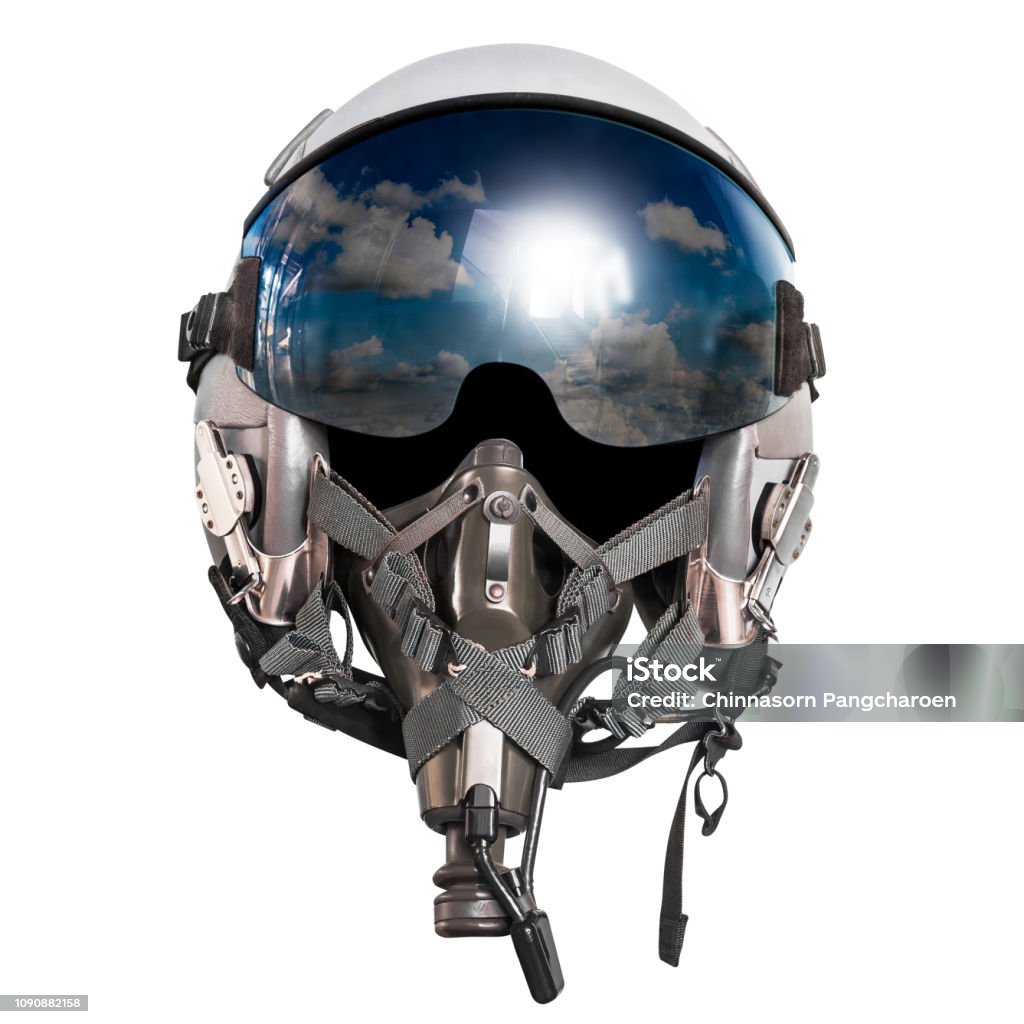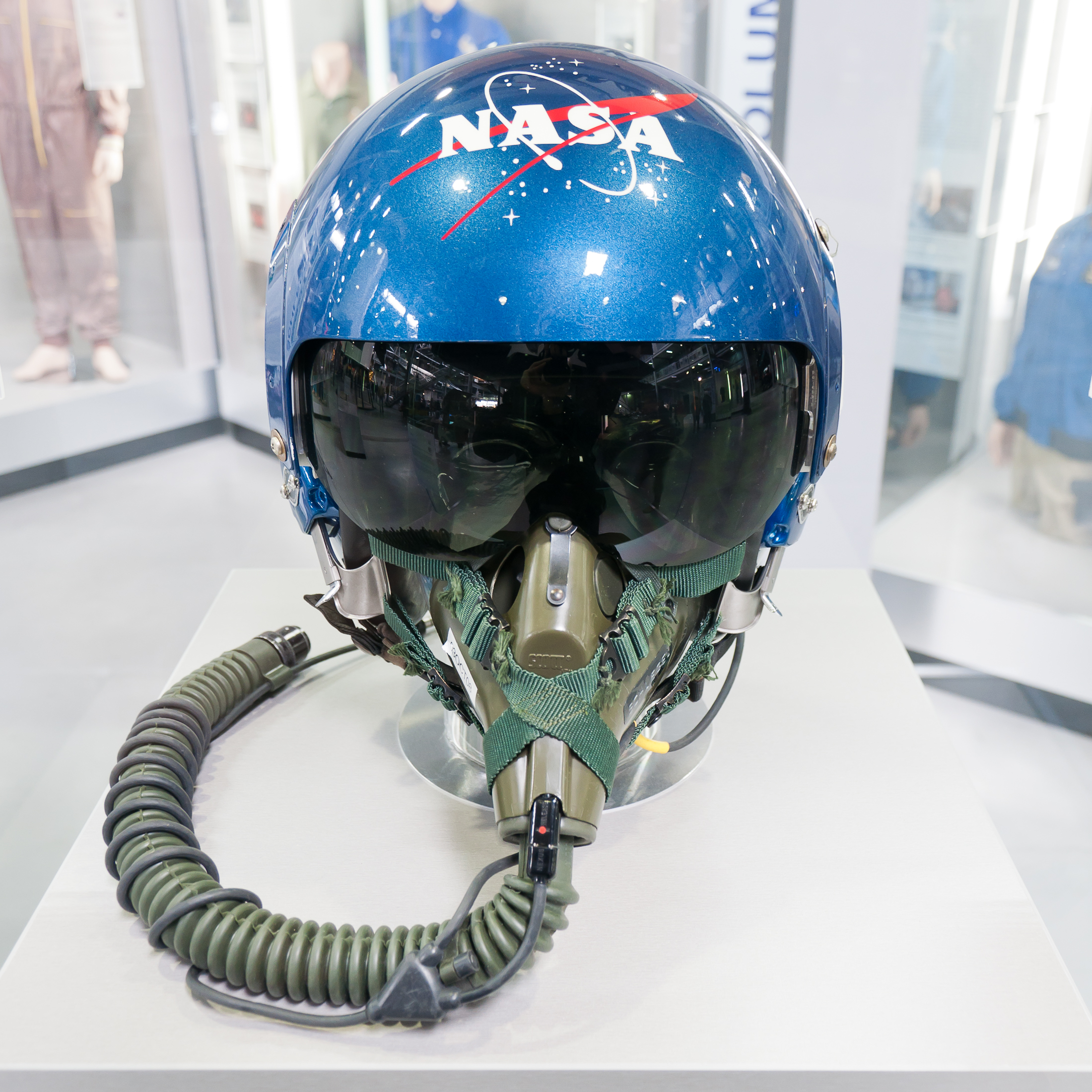Military Jet Helmet - The F-35's helm is an information display device that displays targeting information, aircraft system status and visual and infrared displays of the world outside the aircraft. The blue circle on the helmet is its night vision camera.
In a 2015 press conference, Lt. Gen. Mark A. Welsh III, Air Force Chief of Staff received the Difficult. "A helmet is not just a helmet, a helmet is a workplace," he said of the helmet he invented for Lockheed Martin F-35 Lightning II pilots. "It's battlefield interpretation. It's situational awareness. Calling this a helmet is really... we have to come up with a new term."
Military Jet Helmet

: "Top Gun top hat." No matter what it's called, things will be packed. It combines a suite of sensors, night vision technology, a display system, head tilt tracking and targeting software - all designed to give pilots God's vision: everything, everywhere, for pilots to choose from to avoid sensory overload. Fighter pilots are used to checking the head-up display on the fighter plane for information on airspeed, track, altitude, rate of climb, and other aircraft (friend or foe) in the same sky, while F-35 pilots are. on the helmet visor See all this and more. Pilots can touch a touchscreen in the cockpit's air panel or press a single button on the F-35's display to select three types of information: external live video, thermal imaging or night vision.
Jfm 400vm Fashion Jet Helmet Military Green
The helmet has the ability to follow the pilot's vision. As her head moved, the feed displayed video from a set of six cameras mounted on the F-35's fuselage. A distributed aperture system—one camera mounted in front of the cockpit, another in the back, and the remaining four below the fuselage—gives the pilot the visual equivalent of an X-ray: When she looks down, she can see the image directly. The floor of the plane. One unimpressed pilot indicated that he would have received the same opinion by hovering. The plane climbs a steep slope and looks out from the side of the cockpit. But when the F-35's helmet shows the pilot the ground moving below, it can overlay that video with the flight path to the destination or information about objects on the ground.
In order to follow the pilot's line of sight and direct the appropriate vision to the visor, the helmet must recognize its position and direction. It depends on the magnetic field produced by the transmitter in the pilot's seat. As the pilot's head moves, sensors on the helmet detect changes in the magnetic field. Ideally, the display will follow immediately and seamlessly, but in early headsets, the display delays the change in head direction. According to the Government Accountability Office's April 2017 report, those issues have been resolved.
Below the F-35's cockpit, a 200-pound sapphire-crystal window contains a set of sensors that feed data to a computer, which then displays it on the helmet's visor.
"There are a lot of factors that have to work together," said Joe Ray, managing director of Rockwell Collins-ESA Vision Systems, which provides helmet-mounted display systems. If developers do tests and see performance they didn't expect, "we'll bring the pilot back and replicate [the findings] in the lab," he said.
Momo Avio Pro Military Green/asphalt Logo Asphalt Jet Helmet
For targeting, a system developed by Elbit tracks the position of the helmet to determine where the pilot's gaze is pointing. If the pilot selects the Electro-Optical Targeting System (EOTS), the image he sees comes from sensors in the window below the cockpit, including a forward-looking infrared camera and an infrared search and track radar. The system also provides information such as target identity and distance, and even suggests which weapon to use.
In order for the tracking system to work properly, the helmet must fit properly. A 3D scan of the pilot's head was taken and entered into a central database. From it, technicians develop software that drives the machine through laser-cut foam sheets. Using a pilot's eyepiece, place the optics on the glasses to within two millimeters of the center of each pupil to ensure that the image projected onto his glasses will match his natural field of view.
When the pilot returns to install the liner on the shell, the lens and its feed are adjusted to ensure that only one integrated image appears. Technicians spent four hours over two days to create a helmet plate to fit the pilot's head, making sure the helmet's optical sensor aligned with the pilot's pupil. The measurement also ensures that the helmet is over the pilot's head so that its center of gravity is aligned with the pilot's spine to prevent neck injury during ejection or high-G ejection.

The F-35's HMD layout and symbols are similar to the F-22 and F-16's HUDs. In this pilot's view, the terrain image is overlapped with data such as airspeed (625 knots) shown in the left quadrant, and ground speed just below: "GS 786". In the center, the attitude indicator shows the F-35's pitch and roll in degrees relative to the horizon. At the top center, the display indicates the focus point between 279° and 290° of the compass. The rectangle on the right shows an elevation of "14,000" feet. Diamonds are possible targets; circle, defined circle.
Flight Helmet For Helicopter, Jet And Fixed Wings Pilots, New Aviation Helmets
During a weapons test at Edwards Air Force Base, Calif., in August 2016, an F-35 pilot saw targeting data on his helmet and fired an AIM-120 AMRAAM missile. The ability to identify the target of the F-35 helmet will help the Joint Strike Fighter fulfill its promise: it is not a dog fighter, but a stealth fighter designed to attack before being detected.
The shell of the helmet combines the Kevlar material used in bulletproof vests with carbon fiber fabric, which is formed by coating rubber on synthetic fibers at high temperatures. The checkerboard pattern is derived from a plain weave of carbon fiber, interwoven at an angle of 90 degrees, making the product ultra light with a weight of 4.8 pounds and 50 times stronger than carbon steel. The helmet's polycarbonate lens protrudes like a light bulb, but the shell is more streamlined than previous helmets and includes features such as night vision goggles that used to require separate hardware to attach to the external attachment point. The helmet's foam shell must be custom-made for each pilot at least four hours before being laser-cut; The precision ensures that the display and its glasses stay aligned, even during high-level operations.
Although the helmet's night vision capability can be used with the push of a button - rather than the arduous process of wearing goggles while attempting to fly - the system still encountered difficulties during development. Night vision was the topic of a recent meeting of the F-35 Flight Test Safety Committee, which is made up of F-35 pilots and engineers who work on the program. The committee viewed video of a November 2016 landing test that showed the helmet's night vision display was not working properly. For the test, the F-35B, the Lightning II's short-range vertical takeoff/landing (STOVL) aircraft, made a vertical landing on the attack ship USS.
The test pilot reported that "something was blocking" the night vision signal from the helmet-mounted display. However, the pilot conducted the test and landed safely.
Fighter Jet Helmet Images
Erik Gutekunst, an aviation quality engineer who participated in the test, said he was "crying tears of joy". He added: "Obviously the image he's working on is not favorable for any type of operation in the vicinity of a ship." It will be a software solution to improve night vision is being tested this fall.
As of July, about 400 helmet systems have been delivered, and Rockwell Collins estimates that each of the approximately 3,100 F-35s ordered will require 2.5 to 3.5 helmets. "Repairs, wear and tear, wear and tear, pilots come and go," Ray explained. Components such as mats fitted to individual pilots are not reusable.
Because the helmets are custom-made, estimated to cost at least $400,000 each, pilots do not use them during flight school and simulator training; They use models instead. It wasn't until they were assigned to the F-35 squadron on duty that the pilots received the most complex helmets ever created. A promotional image showing the modularity of the next-generation fixed-wing helmet (Image via Instagram/LIFT Airborne Technologies).

For nearly 40 years, Air Force pilots have worn the same helmet, but that's quickly changing with a lighter, more comfortable, adjustable and more breathable helmet than its predecessor, the HGU-55/P. A good new brain fight will change.
An Inside Look At F 35 Pilot Helmet Fittings > Air Force > Article Display
"We have 55 / P for 40 years, so there is a lot of room for improvement," Maj. Justin "Hasard" Lee said in an earlier video on his YouTube channel about the next generation of fixed wing helmets.
"Everything about this helmet was designed from the pilot's point of view, so we finally have it
Post A Comment:
0 comments so far,add yours